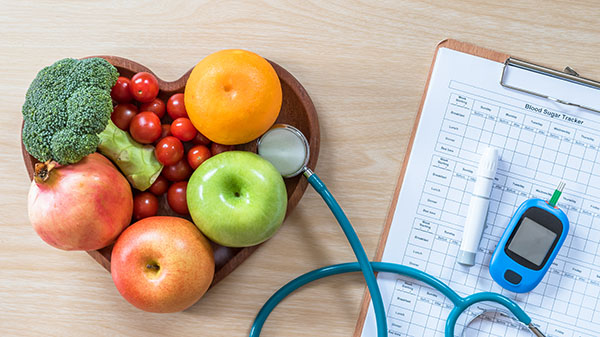
Your body is made up of all sorts of hormones and proteins that help you function each day. These hormones have a lot of responsibilities, and you may have heard a lot about one specific hormone:
Insulin.
Insulin works to keep your blood sugar at a reasonable level, and when your body is unable to produce or use insulin properly, your blood sugar stays high — and can cause serious harm to the rest of your body. This condition is called diabetes.

You probably know that there are two main types of diabetes, but you may be surprised to learn about how they are different from one another.
While Type 1 and Type 2 diabetes have similar effects on the body, they aren't exactly the same. Knowing the difference between the two can help you better support someone who has received a diabetes diagnosis — or even manage your own risk.
Here are four key differences between Type 1 and Type 2 diabetes:
1. Type 2 Diabetes Is Much More Common
In the US, 1 in 10 people have diabetes. Knowing there are two main types of diabetes (Type 1 and Type 2), you might assume each type accounts for about 50% of all diabetes cases.
While this makes logical sense, the fact is that Type 2 diabetes accounts for approximately 90 to 95% of all diabetes cases. Many more people will be diagnosed with Type 2 diabetes versus Type 1 diabetes.
A small percentage of cases are neither Type 1 or Type 2 diabetes, but are called "gestational diabetes". This form of diabetes occurs during pregnancy and affects nearly 10% of pregnant women.
Want to know what other diabetes myths you may have gotten wrong? Take this quiz to find out!
2. The Cause of Diabetes Is Different
Not only is one type of diabetes more prevalent than the other, but even the cause of the diabetes is different.
It is believed that an autoimmune reaction causes Type 1 diabetes. With this kind of reaction, your body accidentally destroys the beta cells responsible for creating insulin. Genetics or a virus can also play a role in someone developing Type 1 diabetes.
Type 2 diabetes, on the other hand, occurs when your body has built up a resistance or abnormal response to insulin — causing your blood sugar to rise. This is often caused by environmental factors and lifestyle habits that can increase your risk.
Some risk factors that increase your chances of getting Type 2 diabetes include:
-
Age: Being 45 years or older
- Weight: Being overweight
- Physical Activity: Being active less than three times per week
- Race: People who are African American, Hispanic or Latino, American Indian, or Alaska Native are considered higher risk
- Family History: Having immediate family members who also have type 2 diabetes
Just because Type 2 diabetes develops later in life — and can be influenced by certain lifestyle factors — doesn’t mean developing diabetes is your fault. Being diagnosed with Type 2 diabetes or prediabetes means there’s an opportunity for you to make small changes that can have an impact on your health and condition.
If you have been diagnosed with Type 2 diabetes, the Diabetes Self-Management Program can help you learn about and live with your diabetes.
3. Type 1 Diabetes Patients Are Often Diagnosed Younger
Another key difference between Type 1 and Type 2 diabetes is the average age of diagnosis. With Type 1 diabetes, most people are diagnosed between the ages of 13 and 14 — though people can be diagnosed as a baby or well into adulthood.
With Type 2 diabetes, people are often diagnosed over the age of 45 — though more young adults, teens, and children are seeing diagnoses, too.
4. Treatment Plans Differ Between Type 1 and Type 2 Diabetes
Currently, there is no known cure for either Type 1 or Type 2 diabetes, but treatment options and lifestyle changes can help individuals manage their diabetes.
With Type 1 diabetes, treatment is lifelong and includes regular insulin (typically injectable) and blood sugar testing (with a blood glucose meter). There are many options to help you manage your insulin, so talk to your provider to find the one that’s right for you.
For Type 2 diabetes, eating healthy and getting more physically active are often the first step in managing your diabetes or prediabetes. In addition to lifestyle changes, your provider may also prescribe insulin and ask you to check your blood sugar level regularly.
Despite Their Differences, Chester County Hospital Can Help
While there are many differences between Type 1 and Type 2 diabetes, one similarity is that Chester County Hospital has the resources, experts, and passion for treating both. If you’ve recently received a diabetes diagnosis, you may be worried about your health or how your life might change.
Your care team at Chester County Hospital includes your primary care provider, nurses, nutritionists, diabetes educator...and even a podiatrist and eye doctor.
From support groups to educational programs, you can find the care and information you need to help manage your Type 1 or Type 2 diabetes — and feel your best.
Learn more about the Diabetes Self-Management Program at Chester County Hospital for information about how to manage your diabetes diagnosis.